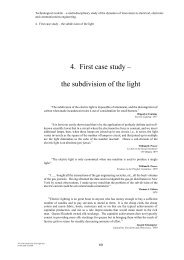Valuation Techniques for Social Cost-Benefit Analysis: - HM Treasury
Valuation Techniques for Social Cost-Benefit Analysis: - HM Treasury
Valuation Techniques for Social Cost-Benefit Analysis: - HM Treasury
Create successful ePaper yourself
Turn your PDF publications into a flip-book with our unique Google optimized e-Paper software.
44<br />
either Dolan et al.‘s (2011b) Step Approach or Welsch‘s (2007, 2008b) methodology outlined in<br />
section 5.2.<br />
2. Where possible align the sample and variables with the policy question.<br />
Whether EV or CV is the appropriate theoretical measure of value will depend on the policy<br />
intervention and property rights. If, <strong>for</strong> example, we are interested in understanding the WTA a<br />
loss in community centre services, where possible the sample should be focused on those<br />
members of the population that have experienced losing a similar service. The sample used<br />
should be similar to the target group of the policy intervention in question.<br />
It should be noted that the effects of non-market good on life satisfaction may be<br />
heterogeneous across the population. There<strong>for</strong>e, when using instrumental variable techniques,<br />
the estimator retrieves the Local Average Treatment Effect (LATE). This is the average causal<br />
effect <strong>for</strong> the group that is affected by the instrument. In the example below (Table 2) income<br />
was instrumented using the earnings of the spouse and so the causal effect of income on life<br />
satisfaction is only applicable to this sample. This should be considered and discussed when<br />
estimating values using the life satisfaction approach 3 .<br />
3. Correctly specify the relationship between the dependent and explanatory variables in the life<br />
satisfaction regression model<br />
Non-parametric and semi-parametric models significantly reduce the chance of functional <strong>for</strong>m<br />
mis-specification, but at the cost of computational complexity and less desirable estimator<br />
properties. Consideration of the regression models adopted in the existing LS applications <strong>for</strong>ms<br />
a good starting point and aids in result comparability. Goodness-of-fit tests should also be<br />
employed in order to find the models with the best fit 4 .<br />
4. Relative income should be controlled <strong>for</strong>.<br />
Relative income can be controlled <strong>for</strong> by including a measure of average income <strong>for</strong> a suitable<br />
reference group.<br />
5. Compensatory market mechanisms should be controlled <strong>for</strong> in the model.<br />
This will provide full, rather than partial, values of non-market goods and ‗bads‘. See the part on<br />
partial values in section 4.2.4.<br />
6. Counter-effects of income should be accounted <strong>for</strong> in the model.<br />
If earned income is being used as the income variable, the number of work hours and time<br />
spent commuting should be held constant. See the part on counter-effects of income in section<br />
4.3.3.<br />
7. Where multiple values may be relevant the analysis should clearly explain what the value<br />
estimate is composed of.<br />
3 For more details on these issues the reader is referred to Angrist and Pischke (2009) and Gangl (2010).<br />
4 See Fox (1997) <strong>for</strong> a review of goodness-of-fit tests.





![AIRTO [Professor Dr Brian Blunden] - HM Treasury](https://img.yumpu.com/15492848/1/184x260/airto-professor-dr-brian-blunden-hm-treasury.jpg?quality=85)










